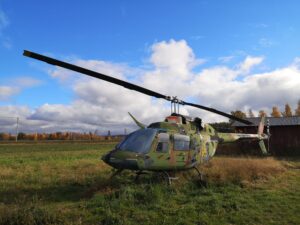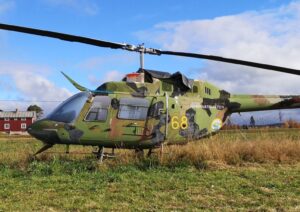HKP6A AGUSTA BELL 206
HELIKOPTER 6a AUGUSTA BELL 206
The light, two-bladed, single-engine helicopter HKP 6 was introduced in the late 1960s, replacing the older HKP 2 model.
Helicopters are highly versatile tools, useful for medical evacuations, rescue operations, and rapid transport of personnel and equipment.
The HKP 6 was primarily used for light transport, training, communications, reconnaissance, and tactical flight training.
There were two versions of the HKP 6: the HKP 6A for the Army, and the HKP 6B for the Navy.
Army required the helicopter to be capable of transporting three fully equipped soldiers over 300 kilometers, with a fuel reserve.
The Navy, on the other hand, required a flight endurance of 1.5 hours, with 300 kg of cargo, two pilots, and a fuel reserve.
The museum's model is an HKP 6A.
The helicopter model itself was developed in the USA, where it is known under the civilian designation Bell 206.
The HKP 6s acquired by Sweden were produced under license by the Italian company Agusta.
A total of 32 units were purchased.
The HKP 6 remained in service until the early 2000s.
The museum's exhibit, no. 68, was involved in an accident in 1984.
During a landing north of Tärendö, the helicopter tipped over, and the main rotor blade struck the cabin, resulting in one fatality. The helicopter was later repaired and remained in service until 2001.
HKP 6A
Manufacturer
Bell Helicopter
Crew
4+1
Height
3,5 m
Rotor diameter
10,2 m
Length
8,7 m
Weight (unloaded)
925kg
Maximum takeoff weight
1500 kg
Maximum speed
165 km/h
Transport range
330 km


